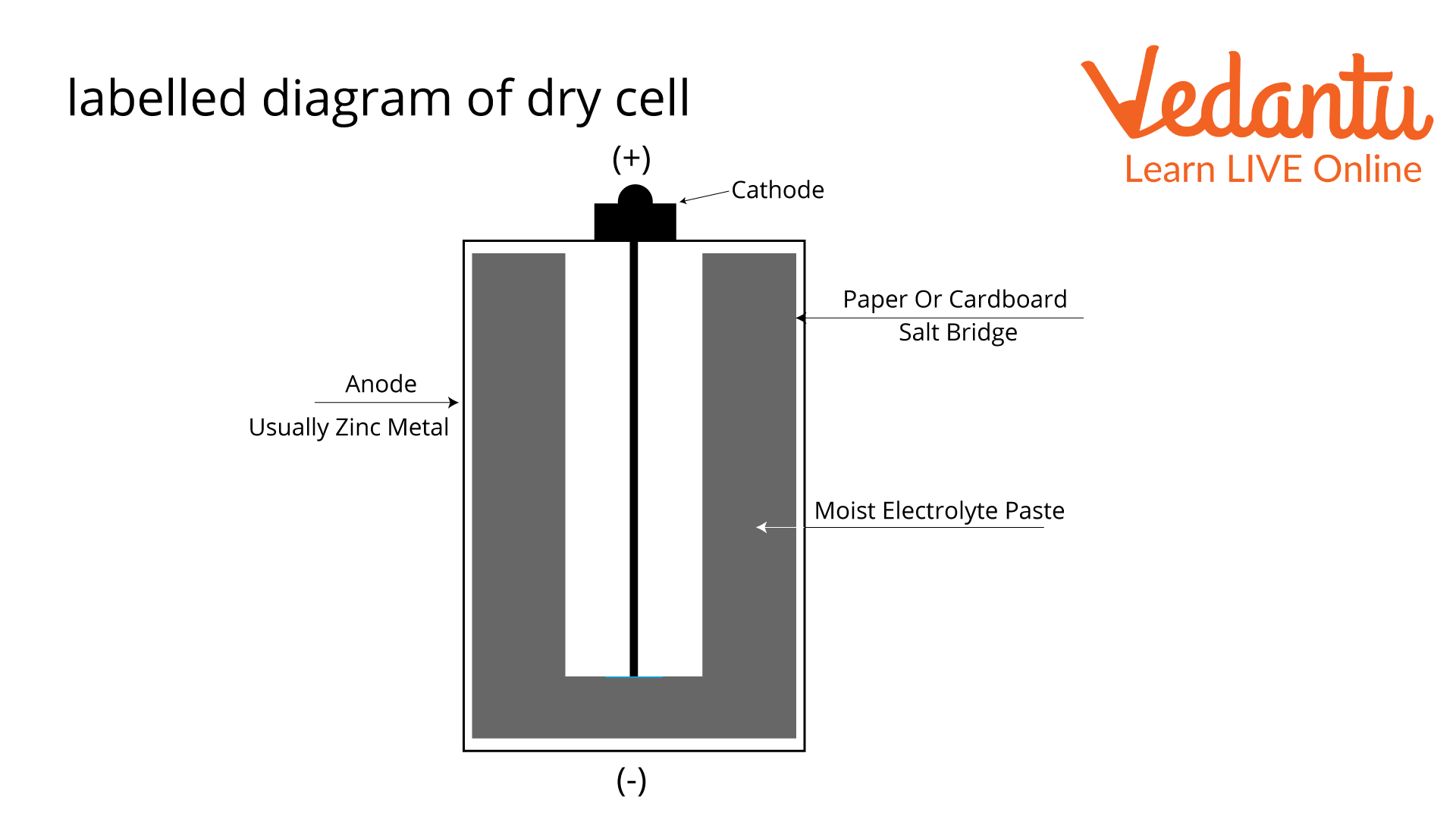




Introduction to Dry Cell
Many chapters of our science book show experiments where dry cell batteries were used to make a circuit. But we don't know how these batteries work or what makes them up. In this article, we'll also discuss dry batteries and how they work.
Dry cell batteries are those that have an electrolyte that has very little water in it. Also, they are different from lead-acid batteries, which use an electrolyte liquid.
Also, most dry cell batteries have electrolytes like semi-liquids or pastes with less water than liquid electrolyte batteries. Also, watch batteries, 9-volt batteries, "C" batteries, and "A" batteries are some of the most common dry batteries.
What is a Dry Cell?
A dry cell is a voltage-making cell in which the electrolyte is in the form of a moist paste. Because of this, the electrolyte doesn't leak out, and the device can be taken anywhere. This is used in flashlights, small radios, and other things. Dry cells are things like zinc-carbon batteries and alkaline batteries.

Labelled Diagram of Dry Cell
A dry cell comprises a metal electrode or graphite rod surrounded by a moist electrolyte paste and put inside a metal cylinder. Depending on the type of battery, different chemicals, like ammonium chloride and manganese dioxide, can be used to make this paste. The cathode and electrolyte paste is wrapped in paper or cardboard and put inside a zinc-made metal used in a dry cell called an anode.
The dry cell battery's anode has two ends, one of which is positive and the other negative. When a load is connected to the battery's terminals, the anode and paste go through a chemical reaction that makes about 1.5 volts of electricity. A pin or collector in the middle of the battery sends this charge to a circuit outside the battery. This circuit connects physically to the electronic device the battery is in, giving it the amount it needs to work.
Working Principle of Dry Cell
Depending on how the dry cell works, it can be called a primary or secondary cell. A primary cell cannot be used again or charged. Once the chemical reagents are used, the electrochemical reactions stop making electricity. On the other hand, a secondary cell can be used repeatedly by resetting the chemical reactions with a battery charge.
Uses of dry cell in daily life
The different uses of dry cell in daily life are as follows:
A lot of portable electronic devices use dry cells.
Chemical energy is turned into electrical energy in dry cells. Most of the time, they are used in portable electronics.
The alarm clock is portable, and only dry cells can be used to power it.
A dry cell is used every day in alarm clocks.
Conclusion
There are different kinds of dry cells. Some can be recharged, while others can only be used once. Batteries should be kept in a cool place because of the rate at which they lose power on their speeds up when the temperature is high. Whether or not a dry cell can be recharged, it is further broken down into primary and secondary cells.
FAQs on Uses of Dry Cell
1. Which is better, dry cell or wet cell batteries?
If we're talking about how long dry cell batteries last, they last longer than wet cell batteries. Also, most handheld devices like watches, remote controls, flashlights, and many others use them. Most importantly, the primary cells in dry batteries lose their charge slowly and last longer than primary cells in wet batteries.
2. How do dry-cell batteries work?
The shape of the battery is a cube or cylinder. Also, the positive end of the battery is at the top, and the negative end is at the bottom. Also, the top of the part that goes to the carbon rod is covered with a metal cap (cathode).
3. What are the benefits of dry cell batteries?
It is better than wet cell batteries in many ways.
The wet cell battery is delicate and can easily leak if turned upside down or moved around.
On the other hand, dry cell batteries are much safer and can handle rough treatment.
Gel batteries have fixed many of the problems that wet batteries have. But even so, dry cell batteries are better in some ways than wet cell batteries.









